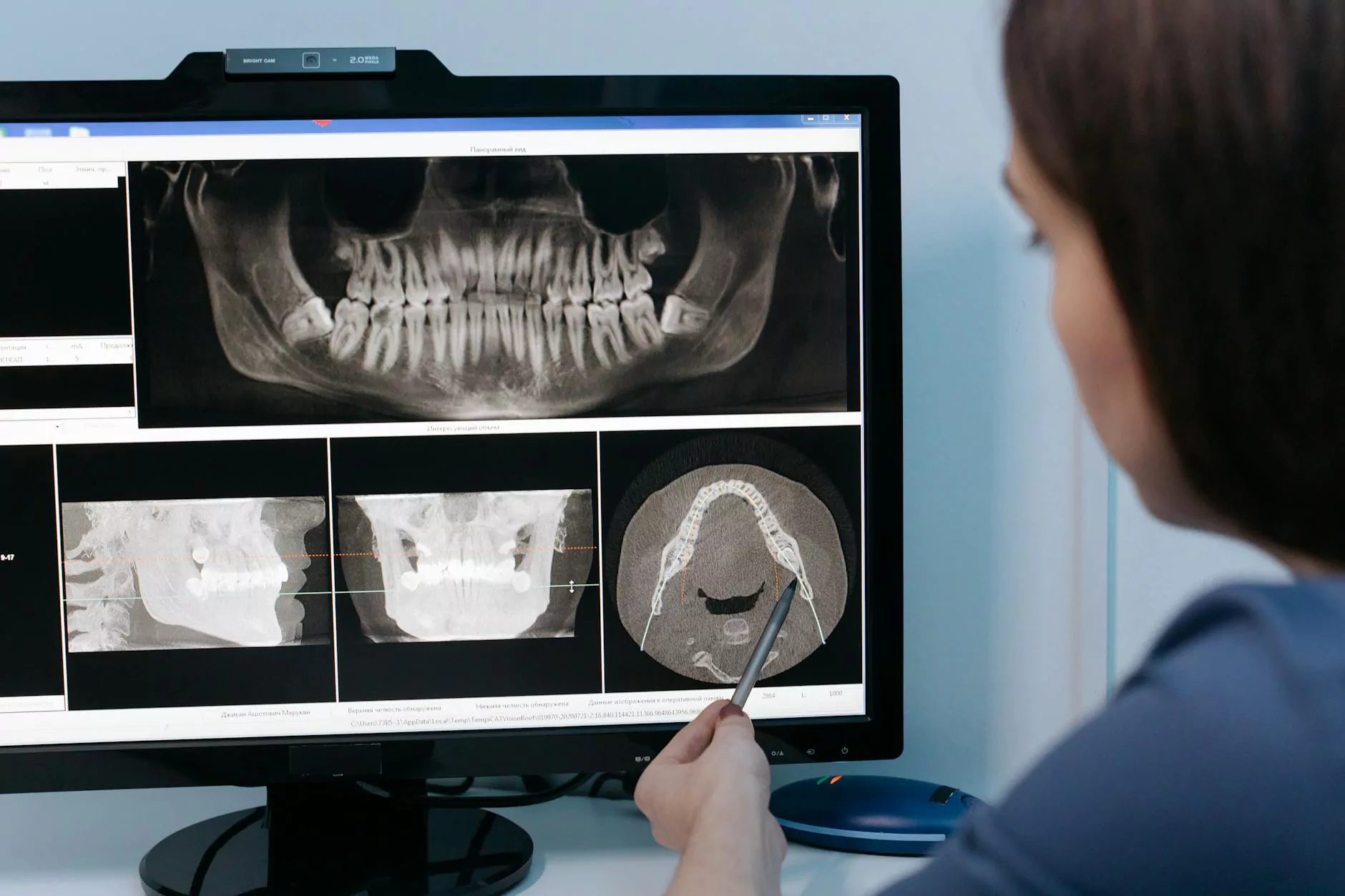Understanding the Diagnostic Hysteroscopy Procedure: A Vital Tool in Female Reproductive Health

In the realm of women's health and reproductive medicine, the diagnostic hysteroscopy procedure stands out as a groundbreaking and minimally invasive method for examining the interior of the uterus. Modern obstetricians and gynecologists increasingly rely on this advanced diagnostic technique to identify, evaluate, and often treat various intrauterine conditions that can affect fertility, menstrual health, and overall well-being.
What Is a Diagnostic Hysteroscopy?
The diagnostic hysteroscopy procedure is a specialized technique that uses a thin, lighted device called a hysteroscope to visualize the inside of the uterine cavity directly. Unlike traditional methods, such as ultrasound or MRI, hysteroscopy provides real-time, high-resolution images allowing healthcare providers to accurately identify abnormalities and plan appropriate treatment strategies.
The Significance of Diagnostic Hysteroscopy in Modern Gynecology
This diagnostic method has revolutionized how gynecologists evaluate intrauterine pathology. It offers several critical benefits:
- Precise diagnosis of conditions like polyps, fibroids, septa, adhesions, and congenital anomalies.
- Ability to perform immediate therapeutic interventions during the same procedure.
- Minimally invasive approach resulting in fewer complications, less pain, and quicker recovery.
- Enhanced accuracy over traditional diagnostic tools, leading to better treatment outcomes.
What Conditions Can Be Diagnosed with a Diagnostic Hysteroscopy?
The diagnostic hysteroscopy procedure is indispensable in identifying a broad spectrum of intrauterine abnormalities, including but not limited to:
- Endometrial polyps: Benign growths that may cause irregular bleeding or infertility.
- Submucosal fibroids: Tumors under the uterine lining that can distort the cavity.
- Uterine septa and congenital anomalies: Structural abnormalities that interfere with fertility or pregnancy.
- Intrauterine adhesions (Asherman's syndrome): Scar tissue formation that may block the uterine cavity.
- Endometrial hyperplasia: Abnormal thickening of the uterine lining.
- Recurrent pregnancy loss causes.
- Abnormal uterine bleeding: Heavy, irregular, or mid-cycle bleeding.
The Procedure: Step-by-Step Overview of the Diagnostic Hysteroscopy
Understanding the procedural process helps women feel more confident and prepared. Here's a detailed step-by-step explanation:
Preparation Phase
Prior to the procedure, your gynecologist will conduct a comprehensive medical history assessment and pelvic examination. Depending on individual circumstances, routine blood tests or ultrasound imaging may be performed to ensure safety and optimize the procedure's accuracy.
Scheduling and Anesthesia
The procedure is typically scheduled in an outpatient setting. It can be performed under local anesthesia, sedation, or general anesthesia, depending on the complexity and patient's comfort preferences.
Entering the Procedure Room
Once comfortably positioned, a speculum is inserted into the vagina to visualize the cervix. The cervix is then gently dilated to allow passage of the hysteroscope.
Introduction of the Hysteroscope
The slender hysteroscope, equipped with a camera and light source, is carefully inserted into the uterine cavity. Carbon dioxide gas or saline solution may be used to distend the uterus, providing a clear view of the uterine walls.
Inspection and Diagnosis
The healthcare provider meticulously examines the entire uterine cavity, capturing images and videos for documentation. Any suspicious tissue or abnormalities are noted for further diagnosis or immediate treatment.
Potential Interventions
If any lesions, polyps, or adhesions are identified, and they are manageable via hysteroscopy, the surgeon can perform therapeutic procedures like removal, cauterization, or biopsy, all within the same session.
Post-Procedure Care
After completing the examination, the hysteroscope is gently removed. Patients are monitored briefly before discharge, with instructions provided regarding medications, activity restrictions, and signs of complications.
Advantages of the Diagnostic Hysteroscopy Procedure at DrSeckin.com
As a leading provider specializing in women's health, DrSeckin.com offers state-of-the-art obstetricians & gynecologists skilled in performing diagnostic hysteroscopies with maximum precision and patient comfort. Here are some compelling reasons to choose our services:
- Expertise in Women's Reproductive Health: Our team boasts extensive experience in diagnosing complex uterine conditions using hysteroscopy.
- Latest Technology: We utilize advanced hysteroscopic equipment that ensures clear visualization and efficient intervention.
- Personalized Care: Each patient receives individualized treatment plans tailored to their reproductive goals.
- Comfort and Safety: Our protocols prioritize patient comfort, safety, and swift recovery.
- Comprehensive Diagnostic and Therapeutic Services: We provide complete care, from diagnosis to treatment, in a single visit whenever possible.
The Benefits of Undergoing a Diagnostic Hysteroscopy Procedure
Choosing diagnostic hysteroscopy offers numerous immediate and long-term advantages, including:
- Accurate Diagnosis leading to targeted treatments.
- Minimally invasive approach with no large incisions or extensive recovery periods.
- Reduced risk of complications compared to open surgical procedures.
- Ability to perform corrective procedures during the same session if abnormalities are detected.
- Enhanced understanding of reproductive issues that may be affecting fertility or menstrual cycles.
- Faster turnaround time and return to daily activities.
Preparing for Your Diagnostic Hysteroscopy: Tips and Guidelines
Proper preparation helps ensure the success and comfort of the procedure:
- Discuss all medications and allergies with your healthcare provider prior to the procedure.
- Arrange for someone to accompany you home, especially if sedation or anesthesia is involved.
- Follow the instructions regarding fasting, typically abstaining from eating or drinking 2-4 hours prior.
- Plan for post-procedure rest and avoid strenuous activities for the rest of the day.
Post-Procedure Expectations and Recovery
Most women experience mild cramping or spotting after the diagnostic hysteroscopy procedure. These symptoms typically resolve within a few days. It is essential to watch for signs of complications such as heavy bleeding, fever, or severe pain, and contact your healthcare provider promptly if they occur.
Why Choose DrSeckin.com for Your Hysteroscopy Needs?
At DrSeckin.com, our commitment to women's health goes beyond diagnosis. We aim to provide comprehensive, compassionate, and cutting-edge care tailored to every patient's unique needs. With dedicated specialists in Doctors, Health & Medical, Obstetricians & Gynecologists, we ensure that your reproductive health journey is supported by expertise, advanced technology, and a patient-centered approach.
Conclusion: Empowering Women's Reproductive Health Through Advanced Diagnostics
The diagnostic hysteroscopy procedure is a cornerstone of modern gynecological practice, offering unmatched clarity and therapeutic possibilities in evaluating intrauterine health. Whether you are experiencing fertility challenges, abnormal bleeding, or suspect structural abnormalities, this minimally invasive procedure provides precise insights that can transform your reproductive prospects.
Trust DrSeckin.com to deliver expert care with a focus on safety, comfort, and optimal outcomes. Embrace the power of advanced diagnostic tools to take proactive steps toward improving your reproductive health today.









